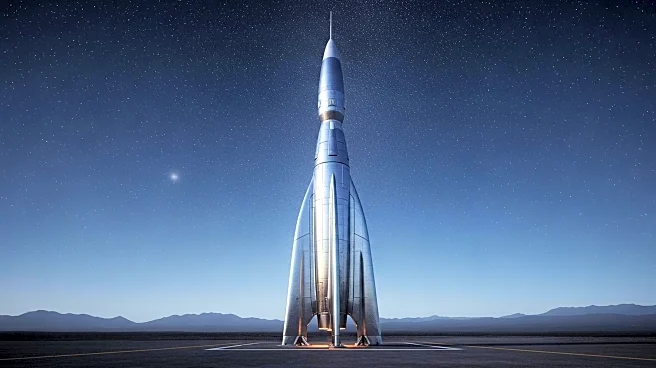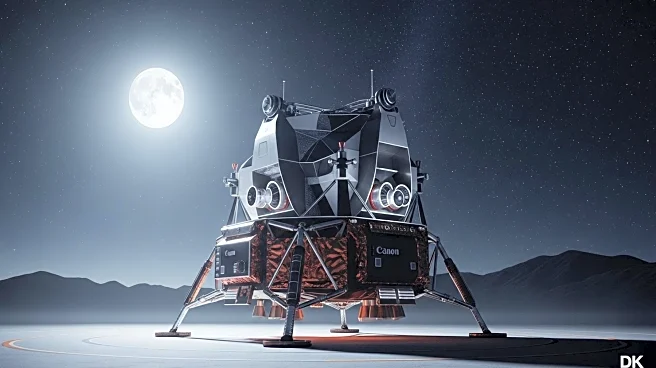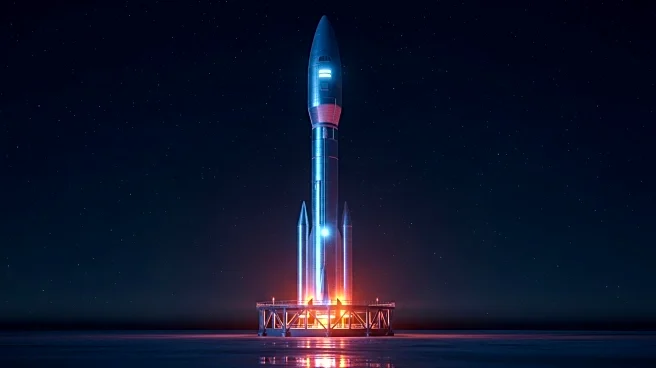What is the story about?
What's Happening?
SpaceX is preparing to launch its Starship megarocket, the largest rocket system ever constructed, as part of NASA's plan to return astronauts to the moon. The launch is scheduled for Monday from South Texas, aiming to test the rocket's capabilities. However, the timeline for the Starship's readiness is uncertain, with concerns about its ability to meet NASA's 2027 moon-landing mission deadline. The Starship has faced multiple test failures, including dramatic explosions, and requires significant refueling in orbit, a process that has never been attempted before. NASA's plan involves using the Starship as a refueling depot, with additional Starships launching to dock and transfer fuel, a complex process that could require between 10 to 40 launches.
Why It's Important?
The success of SpaceX's Starship is crucial for NASA's Artemis III mission, which aims to land astronauts on the moon's south pole by 2027. This mission is part of a broader goal to establish a permanent human presence on the moon, leveraging lunar resources like water ice. The complexity of the Starship's refueling process poses significant challenges, and delays could impact the U.S.'s ability to compete with China's lunar ambitions. The choice to use Starship, made during a period without a Senate-confirmed NASA leader, has been criticized for its complexity compared to the Apollo missions. The outcome of this mission could influence U.S. leadership in space exploration and international competition.
What's Next?
SpaceX is set to launch its next test flight, Flight 11, on Monday, which will be crucial in assessing the Starship's capabilities. NASA plans to debut an upgraded version of the Starship after this test, potentially altering current predictions about the number of refueling flights required. The agency remains committed to beating China to the moon, despite concerns about the timeline and complexity of the mission. NASA's leadership has expressed confidence in SpaceX's ability to deliver, citing the company's track record of success in other projects. However, the Aerospace Safety Advisory Panel has warned that the timeline is significantly challenged, and the vehicle may be years late to meet the 2027 deadline.
Beyond the Headlines
The decision to use SpaceX's Starship for the Artemis III mission reflects broader shifts in space exploration strategy, emphasizing commercial partnerships and innovative technologies. Critics argue that the choice was made based on future potential rather than current readiness, highlighting the risks of relying on unproven systems under tight deadlines. The complexity of the mission underscores the challenges of modern space exploration, where traditional approaches like the Apollo missions are no longer feasible. The success or failure of this mission could have long-term implications for NASA's strategy and the role of private companies in space exploration.
AI Generated Content
Do you find this article useful?













